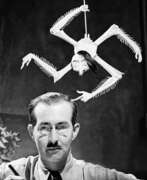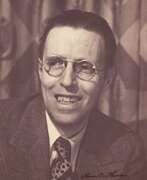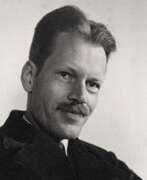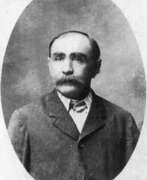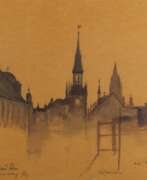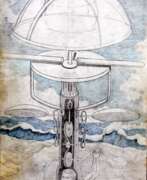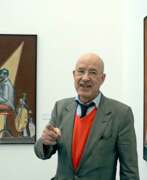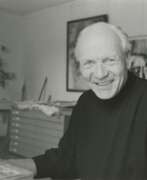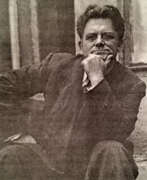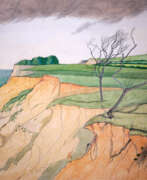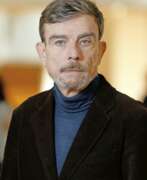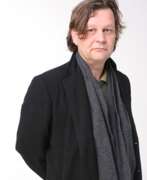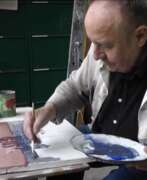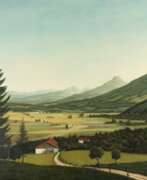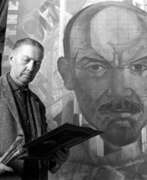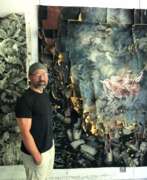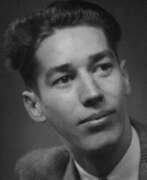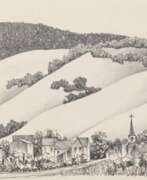Graphic artists Industrial landscape


Friedel Anderson is a German landscape, architectural and object painter.
Friedel Anderson's artistic work encompasses a wide range of techniques and motifs, from landscapes painted against nature, city and harbour views to portraits and still lifes. The landscapes initially focused on the Nordic region. Later, regular journeys through Europe (Italy, France, England) and Africa expanded the themes of his travel and landscape paintings. Anderson found further focal points of his work in shipping, the industrial working world, as well as in the cultural and natural spaces around harbours, rivers and industrial ruins. Interiors and still lifes are also among Anderson's important motifs.
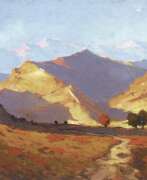

Gennady Fyodorovich Babikov (Russian: Геннадий Фёдорович Бабиков) was a Soviet and Turkmen artist of the twentieth century. He is known as a painter, graphic artist, watercolorist, master of landscape and still life and is considered the founder of the genre of Turkmen industrial landscape, representative of the Russian academic school of painting in Central Asia.
Gennady Babikov participated in the Great Patriotic War, at the front he created more than 100 graphic portraits of fellow soldiers. The artist was famous for his linocuts, and also developed a still life style, which was called "Babikov's" in Turkmenistan.
His works are in many private collections around the world.
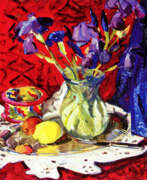

Moses Abramovich Blank (Russian: Моисей Абрамович Бланк) was a Ukrainian Soviet artist of the mid-twentieth century. He is known as a painter and graphic artist, distinguished for his still lifes and landscapes.
Moses Blank actively participated in art exhibitions, including national, all-Union and international exhibitions, beginning in 1927. He used various artistic techniques including lithography, etching, ink, watercolor, gouache, pastel, and sometimes oil. During the Great Patriotic War he voluntarily went to the front, after the war he served as an artist in the Air Defense Corps in Riga. The master left a noticeable trace in the history of art in Ukraine.
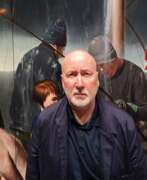

Ken Currie is a Scottish artist and a graduate of Glasgow School of Art (1978-1983). Ken grew up in industrial Glasgow. This has had a significant influence on his early works. In the 1980s Currie produced a series of works that romanticised Red Clydeside depicting heroic Dockworkers, Shop-stewards and urban areas along the River Clyde.
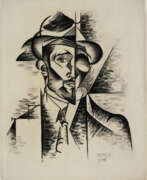

Felix del Marle is a French artist and designer associated with the avant-garde movements of the early 20th century, in particular Orphism and De Stijl. Originally influenced by Cubism, he later adopted the principles of Orphism, a movement founded by Robert Delaunay and characterised by the use of bright colours and geometric shapes to create abstract compositions.
Felix del Marle explored the dynamic interaction of colours and shapes to evoke a sense of rhythm and movement. His works often feature overlapping planes, bold colour contrasts and a sense of optical vibrancy.
Felix del Marle was also a significant influence on the De Stijl movement, which sought to reduce art to its basic geometric elements and colours. He collaborated with Piet Mondrian and Theo van Doesburg.
In addition to painting, del Marle pursued industrial and graphic design, applying his principles to furniture, textiles and typography. He believed in the integration of art into everyday life and the synthesis of artistic disciplines.
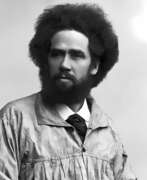

Aleksey Kuzmich Denisov-Uralsky (Russian: Алексей Кузьмич Денисов-Уральский) was a Russian artist and stonecutter, born in 1864 and known for his exceptional landscape paintings and intricate stone carvings. He made significant contributions to both the artistic and jewelry worlds, particularly in Russia during the late 19th and early 20th centuries.
Denisov-Uralsky's works are celebrated for their meticulous craftsmanship and vibrant use of color. His paintings often depicted the serene landscapes of the Ural Mountains, capturing their natural beauty with a delicate touch. Notable pieces include "River Landscape" and "Author's Boat by the High Wooded Bank of the Chusovaya," both of which have fetched impressive prices at auctions, reflecting their enduring appeal.
In addition to his paintings, Denisov-Uralsky was renowned for his work with semi-precious stones. He founded a prominent firm in St. Petersburg, where he created exquisite jewelry and decorative items. One of his famous works, an imperial hardstone figure of a parrot, showcases his ability to transform natural stones into lifelike sculptures. This piece was even purchased by Dowager Empress Maria Feodorovna, underscoring its high value and artistry.
Collectors and art enthusiasts continue to admire Denisov-Uralsky's legacy, which combines the elegance of Russian landscapes with the precision of fine stonework. His works remain sought after at auctions and are displayed in various prestigious collections worldwide.
For updates on new product sales and auction events related to Aleksey Kuzmich Denisov-Uralsky, sign up for our notifications. Stay informed about opportunities to acquire pieces by this exceptional artist.
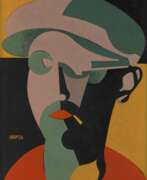

Karl Hermann Haupt was a German painter, graphic artist and designer.
He studied painting at the Art School in his native Halle from 1920 to 1923. From 1923 to 1924 he attended courses at the Bauhaus in Weimar, where his teachers included Josef Albers, Laszlo Mohoy-Nagy, Wassily Kandinsky, Paul Klee and Walter Gropius. After his studies at the Bauhaus, Haupt returned to Halle, where he worked as a painter until 1926. He then moved to Krefeld to begin a career as a textile painter. Haupt remained in Krefeld for most of the 1930s, combining painting with his studies with Johannes Itten at the Krefeld School of Textile Decoration.
After military service during World War II, Haupt worked for the regional government of Saxony-Anhalt until 1951, when he was appointed lecturer at the School of Applied Art in Berlin. From 1953 he worked as a scientific illustrator and photographer at the Academy of Sciences in Berlin until his death.
Haupt's paintings and graphics often depicted urban scenes and industrial landscapes, and he was particularly interested in the human figure and the impact of modern society on the individual. His work was known for its sharp, crisp lines and attention to detail.
Today, Haupt's work is recognized as an important contribution to modern art in Germany, and his paintings and drawings are in the collections of major museums around the world.
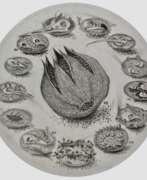

Hipkiss is the pseudonym of Alpha and Christopher Mason, both artists born in 1964 in Britain.
The artists began working together in the UK, then moved to France, where they continue to live and work. They are known for detailed, detailed figurative drawings created in a mixed media technique that combines pencil, silver ink and metallic foil. The artists draw large-scale urban landscapes, landscapes, strange insects, plants and birds, depicting images of a utopian future where nature has conquered the industrial environment.
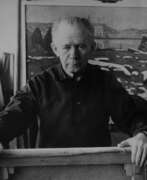

Sulo Juntunen (Russian: Суло Хейккиевич Юнтунен) was a Soviet artist of Finno-Ingermanic origin, celebrated for his multifaceted contributions to the art world as both a painter and a graphic artist. Born on September 1, 1915, in Saint Petersburg, Russia, and passing away on November 19, 1980, in Petrozavodsk, USSR, Juntunen's life and career were marked by his deep connection to the landscapes of his homeland and his ability to portray the changing face of society through his art.
His early years were characterized by a diverse set of experiences, from living in Finland with his family to working various jobs upon their return to the Soviet Union. It wasn't until after World War II that Juntunen fully embraced his calling as a painter, joining the Union of Soviet Artists in 1946 and becoming a significant figure in the art community, especially within the Karelian region. Juntunen's work is renowned for its detailed portrayal of modern urban and industrial landscapes, as well as the serene beauty of unspoiled nature. His artistic journey reflects a transition from detailed Soviet landscapes to a more laconic and strict drawing style, culminating in panoramic landscapes primarily focused on Karelia in his later years.
Juntunen's achievements in the art world were recognized with numerous titles, including Honored Worker of Arts of the Karelian ASSR in 1953, Honored Worker of Arts of Russia in 1959, and People's Artist of the USSR in 1980. His work has been exhibited widely, both within the USSR and internationally, and is part of the collections of major museums such as the Tretyakov Gallery, the Russian Museum, and even the Museum of Realistic Arts in Utah, USA.
For collectors and experts in art and antiques, Sulo Juntunen's work offers a rich tapestry of Soviet and Finnish history, depicted through the lens of an artist who skillfully navigated between two worlds. His legacy continues to inspire and intrigue those passionate about the art of the 20th century.
If you're interested in staying updated on new discoveries, sales, and auction events related to Sulo Juntunen, sign up for our updates. This subscription is your gateway to the latest information, ensuring you're always informed about opportunities to engage with the work of this remarkable artist.


Alfred Kornberger was an Austrian painter and graphic artist. He studied painting with Professor Robin Christian Andersen at the Academy of Fine Arts in Vienna.
Stylistically, he dealt with the different facets of classical modernism and was inspired by Pablo Picasso's late work as well as by the depictions of surrealist artists. In his early years he devoted himself to various themes from the world of industry as well as topographical depictions. Later he turned almost exclusively to the depiction of the female nude.
Alfred Kornberger's work is part of the great Austrian tradition of body-oriented art, which ranges from Egon Schiele to Alfred Hrdlicka. His central theme, the female nude, is not only a projection of sensual desire but also an expression of psychological states.
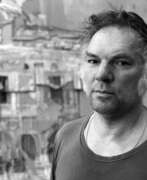

Valerii Nikolaevich Koshliakov (Russian: Валерий Николаевич Кошляков) is a Russian painter, graphic artist, author of installations, lives and works in Germany, France and Moscow.
He studied at the Rostov Grekov Art School. Koshliakov works mainly with images of architecture, which in his works appears as a memory of the former greatness. The artist uses canvas, paper, kraft, but most often cardboard, pieces of which make up huge canvases and entire installations. On this basis with diluted colors he creates a very light, yet monumental painting, which imbues the material with a web of sweat, reflecting the author's unique vision.
The works of this successful artist are in the collections of the world's major museums, including the Tretyakov Gallery, the Guggenheim Museums in New York and Bilbao.
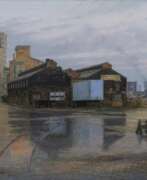

Fritz Kreidt was a German painter. He was a member of the Künstlersonderbund, an association of German artists committed to realism.
Coming from university, Kreidt's early works were rather abstract, but he soon turned to a more figurative style of representation. He finally found his main subject in melancholic-looking landscape depictions - often industrial wastelands or building sites - which, although often deserted, bear witness to human labour and its transience. Since the year of German reunification in 1990, Kreidt has been concerned with industrial and urban landscapes of the former GDR.
In 2005, Kreidt went on a study trip to China, which inspired him to create the series "Chinese Landscapes". In these works, deviating from his usual technique of oil painting, he often used conté and coloured pencils, with which he rendered architectural and landscape elements in fine strokes in a manner more oriented towards graphic art.
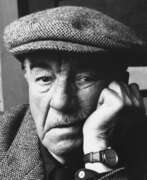

Joseph Fernand Henri Léger was a French artist renowned for his innovative approach to Cubism and his transition towards a figurative, populist style. Born in Argentan, Orne, Lower Normandy, Léger's early career was marked by a stint as an architectural draftsman and a series of educational pursuits that eventually led him to Paris, where he embraced painting seriously. His artistic journey was significantly influenced by the bold abstractions of Cubism, characterized by geometric shapes and a vibrant palette, distinguishing his work from his contemporaries with what came to be known as "Tubism".
Léger's service in World War I profoundly impacted his artistic direction, leading him to adopt a 'mechanical' style that depicted the modern industrial world with sleek, tubular forms. This period saw creations like "Soldier with a Pipe" and "The Card Players," reflecting his war experiences and the mechanical aesthetics of the time. The post-war era encouraged Léger to explore the mechanical style further, evident in works like "The Bargeman" and "Mechanical Elements," highlighting the pace of technological advancement.
Throughout his career, Léger's work evolved, notably in the 1920s, where he aligned with Purist ideas, blending classicism with modernity. This phase is exemplified in "Woman with a Cat," showcasing a classical form with a modern, polished finish. By the 1930s, Léger's art took a more figurative, populist turn, aiming to democratize contemporary art and make it more accessible. His commitment to art education, especially for the common worker, underscored his belief in the social role of art.
For those intrigued by Joseph Fernand Henri Léger's groundbreaking contributions to modern art, his works can be found in prestigious museums worldwide. His legacy continues to inspire art collectors and enthusiasts alike. To stay updated on exhibitions and auction events featuring Léger's work, sign up for updates and embrace the unique opportunity to explore the richness of his artistic endeavors.
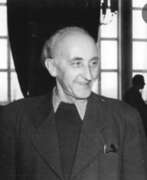

Oskar Nerlinger, born on March 23, 1893, in Straubenhardt, Germany, was a notable German painter whose career spanned the early to mid-20th century. His work was part of the painting event in the art competition at the 1932 Summer Olympics, highlighting his recognition in both the art and sports communities. He also worked under the pseudonym Nilgreen.
Nerlinger's art primarily focused on painting, and he became known for his unique style and contributions to the art world during a time of significant cultural and political change in Germany. His artworks reflected the trends and movements of his era, capturing the essence of the period in which he lived and worked.
While specific details about Nerlinger's most famous works or their presence in museums and galleries are not readily available, his participation in the 1932 Summer Olympics art competition suggests that his work received considerable recognition. This would be of particular interest to collectors, auctioneers, and experts in art and antiques, especially those with a focus on early 20th-century German art.
For those interested in exploring more about Oskar Nerlinger's life, work, and impact on the art world, further research and exploration into art history sources and museum collections that feature German art from this period would be beneficial.


Alexey Shovkunenko (Russian: Алексей Алексеевич Шовкуненко), an eminent Ukrainian and Soviet artist, is celebrated for his vast contributions across painting, graphic arts, and education. His birth on March 21, 1884, in Kherson, within the bounds of the then Russian Empire, and his passing on March 12, 1974, in Kiev, USSR, spanned a timeline of significant historical and artistic evolutions. Renowned for his work in modernist and socialist realism styles, Shovkunenko's repertoire includes landscapes, still lifes, and portraits, crafted through oil, watercolor, and pastel mediums.
His educational journey at the Grekov Odesa Art School and the Saint Petersburg Academy of Arts set the foundation for his illustrious career in both creation and mentorship. Shovkunenko was deeply integrated into the art community, engaging with the Society of South Russian Artists and the Kostandi Society of Artists. His academic roles, notably at the Kyiv State Art Institute, positioned him as a mentor to generations of artists.
Shovkunenko's artwork spans various themes, from the industrial to the intimate. His "Dneprostroy" series, lauded at international exhibitions, and his psychological portraits of significant Ukrainian figures, such as Pavlo Tychyna, Mykola Lysenko, and Oleksandr Bohomolets, underscore his versatility and depth. These works serve not only as artistic expressions but also as historical narratives, capturing the spirit and challenges of his times.
For aficionados of art and antiquities, Shovkunenko's legacy offers a rich tapestry of Eastern European cultural and artistic traditions. His influence, through both his pedagogical endeavors and his diverse body of work, continues to enchant and inspire.
For those keen on delving deeper into Alexey Shovkunenko's remarkable contributions and staying abreast of the latest developments related to his work, including sales and auction events, signing up for updates is highly recommended. This initiative promises to be a gateway to understanding the profound impact and enduring legacy of this distinguished artist.
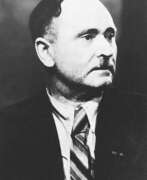

Ivan Nikolayevich Shulga (Russian: Иван Николаевич Шульга) was a Ukrainian Russian and Soviet artist of the first half of the twentieth century. He is known as a master of painting and drawing and a teacher. His name is included in the "Unified Art Rating of the world's 10,000 best artists" and in the list of the 100 most outstanding artists of Ukraine.
Ivan Shulga worked in different genres: he painted portraits, genre paintings, landscapes (marine, landscape, architectural, industrial), created still life paintings, panels, drawings for art postcards, political posters. His artistic legacy also includes pictures in the genre of nude and historical genre. The artist also illustrated magazines and books, designed theatrical sets.
Shulga worked in watercolor, pencil drawing, gouache, ink and sanguine, pastel, oil and tempera painting.
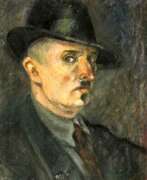

Mikhail Petrovich Staniouta (Russian: Михаил Петрович Станюта) was a Belarusian Soviet artist. He is known as a painter, graphic artist and teacher.
Mikhail Staniouta worked mainly in easel painting in the genres of thematic painting, portrait, landscape, still life. His narrative and thematic paintings were distinguished by their topicality, expressiveness of composition and drawing, color saturation. The artist also worked in graphics, which in his creative heritage is represented, in particular, by sketches of self-portraits of the master.
